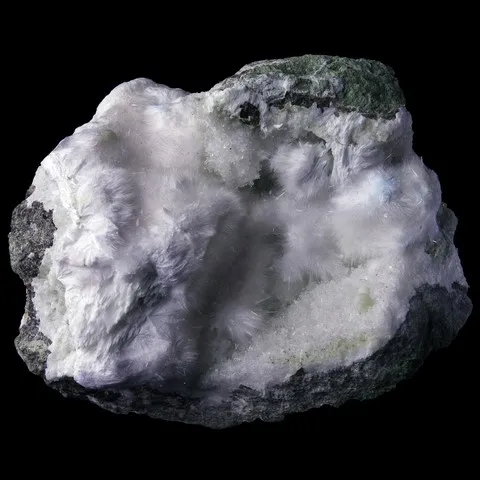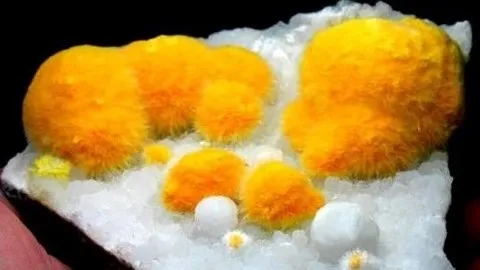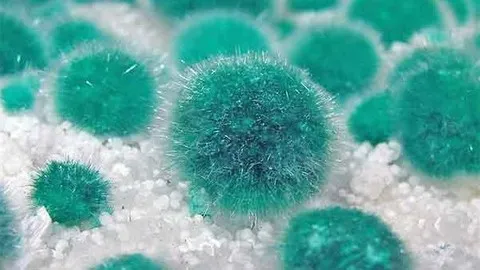OKENITE
Class : Silicates
Subclass : Inosilicates
Crystal system : Triclinic
Chemistry : Ca5Si9O23. 9H2O
Rarity : Uncommon
Okenite is a spectacular calcium silicate, mainly present in geodes and basalt cavities, in which it accompanies zeolites (apophyllite, gyrolite, laumontite, etc...), prehnite and calcite. It was named in honor of the German naturalist Lorenz Ocken. Its morphology is characterized by extremely fine needle-like crystals which group together to form spiky balls ("sea urchins" or "cotton balls") or radiate tufts. Transparent to translucent, with a vitreous luster, okenite is colorless to white, sometimes slightly yellow. It is a mineral that has no particular use, it is only intended for mineral collectors.
Photo : Okenite from Poonah, Maharashtra, India © Rémi Bornet
Okenite in the World

Okenite is not present in the French underground.
Twinning
Existing but invisible to the naked eye.
Fakes and scams
Okenite is always naturally white or slightly yellow in color. It is frequently dyed in various colors (most often canary yellow or green, but also sometimes red or blue and potentially any color) in order to facilitate its sale. These treatments having been widely denounced, they have become rare today on the market.
Hardness : 4.5 to 5
Density : 2,28 to 2,33
Fracture : Fibrous
Trace : White
TP : Translucent to transparent
IR : 1.512 to 1.542
Biréfringence : 0,003 to 0,010
Optical character : Biaxial -
Pleochroism : None
Fluorescence : None
Solubility : Slowly turns into silica gel in acids
Magnetism : None
Radioactivity : None



